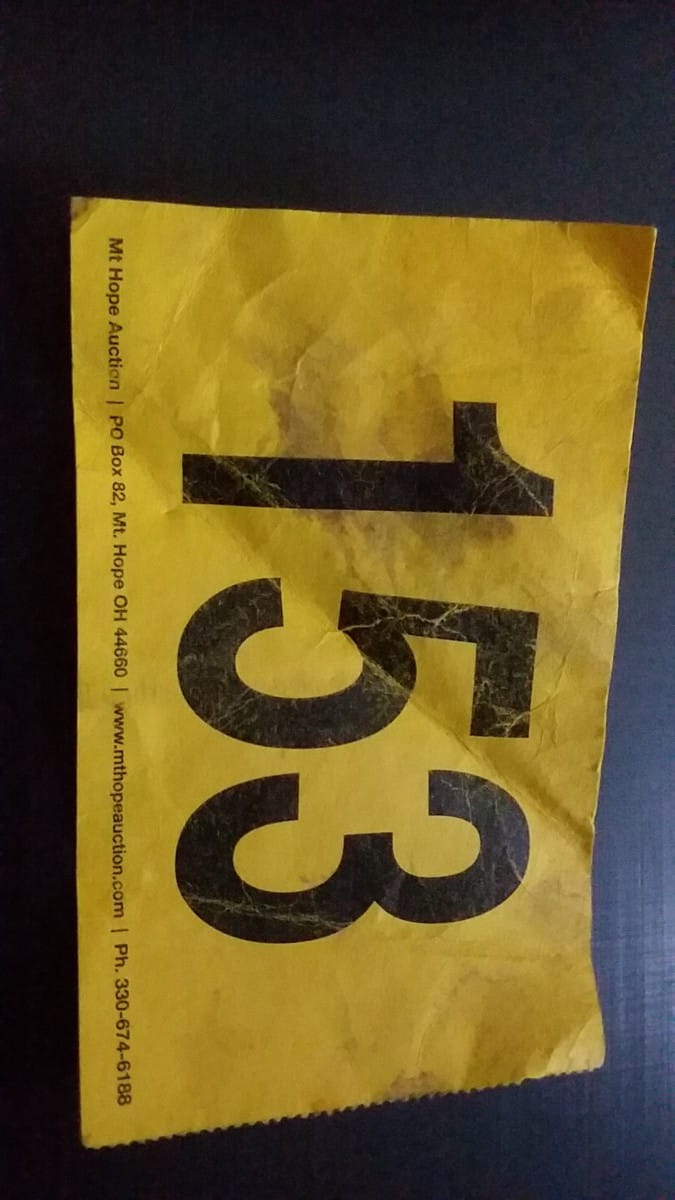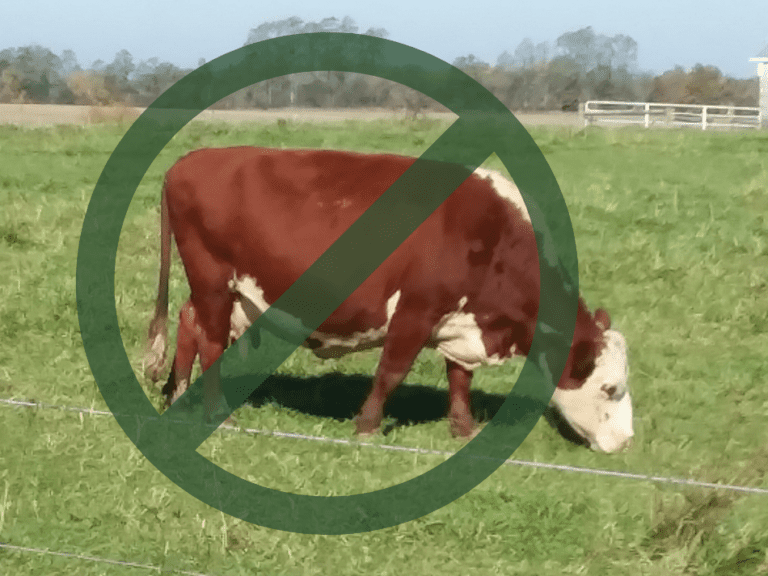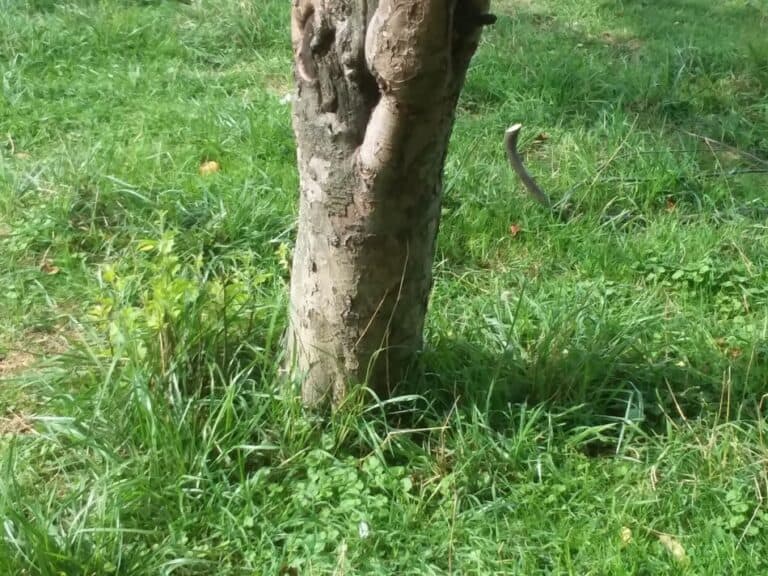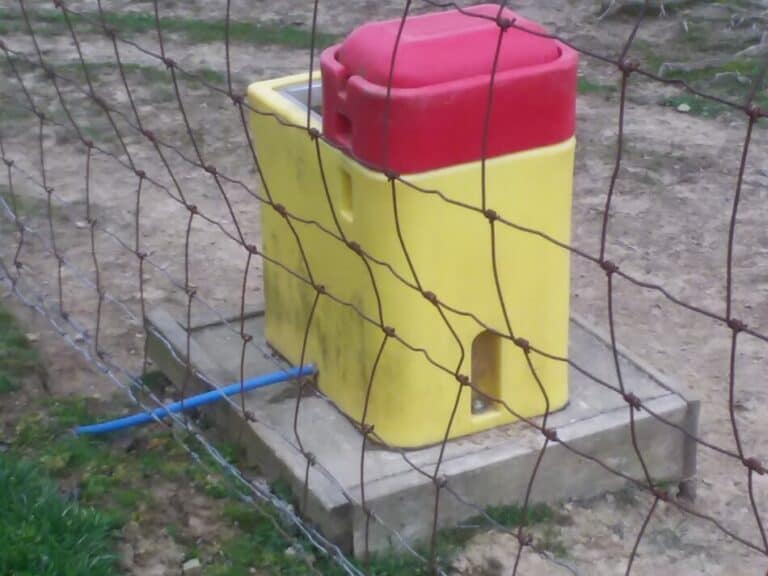Buying At The Livestock Auction: 7 Things To Know Before You Go
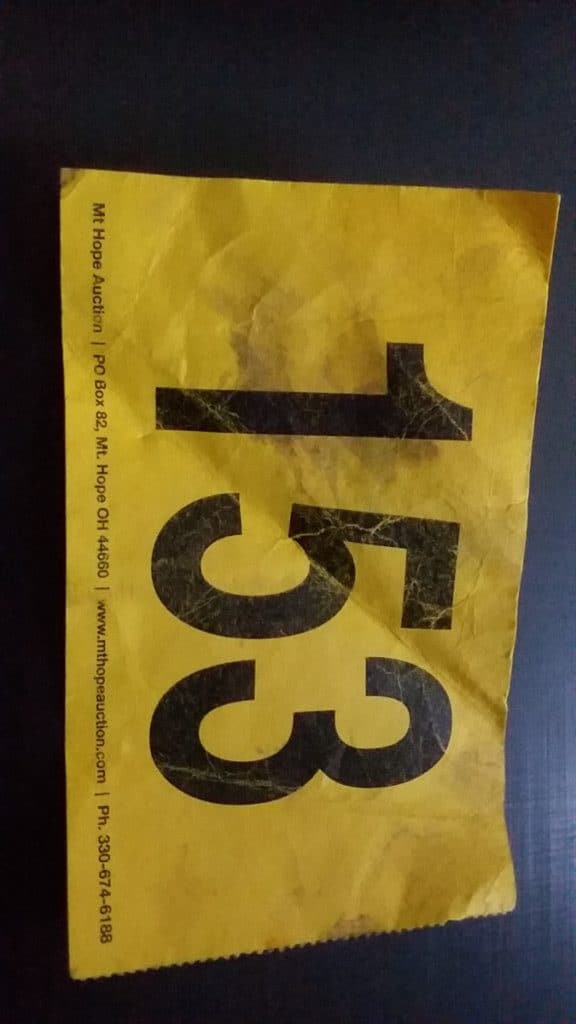
I love auctions, but have to admit they take some getting used to if you are new. You need to understand what’s going on before you decide to purchase anything for yourself! Let’s look into the things you should have figured out before you buy!
Before buying at a livestock auction, you should prepare by attending a few auctions as an observer, knowing current price ranges and being ready for the animals at home before you buy them.
Here are a few tips to help you make your first few purchases at the auction fun and successful.
Attend livestock auctions as an observer
Go to the auction and get the feel of how things work before you even consider bidding on anything!
If the auction is new to you then you are going to see lots of things that are new to you and that can be confusing!
How Do Livestock Auctions Work? is an article I wrote to cover the other side of livestock auctions, check it out for more insight to help you understand the livestock auction process.
Know how the livestock auction works
It takes some time to get familiar with the auction system and develop an ear to accurately decipher what you are hearing.
To save yourself some confusion and stress, be sure you are used to the way the auction operates.
This includes being able to clearly understand the auctioneers before you even think about bidding!
Practice listening to multiple auctioneers
Be aware that most auctions will be large enough to need multiple auctioneers.
You will need to listen to a variety of them until your ear gets adjusted.
Just like anything else, each auctioneer has his own personality, cadence and style of auctioneering.
Here is an example: I was at the local auction attending the goat sale a few months ago and the auctioneer at the time was a guy I had not heard very often.
On one particular goat that was selling all I heard was …40, …40, …40.
The bid was …30 and he was asking if anyone was willing to raise their bid up to ….40 but $140 or $240? I had no idea.
Turns out it was $240.
I was not paying close enough attention, I was texting! I was not focused so I lost track of the bidding and I go to these things all the time!
You’ll have a favorite auctioneer, mine is Dave Acker
My favorite auctioneer to listen to is Dave Acker of Wooster, Ohio.
He doesn’t normally sell livestock (except at the fair) but does have a weekly hay sale on Saturdays.
Dave makes attending an auction fun and entertaining. If you get a chance, go listen to him sell, he’s great!
You’ll need to get a buyer’s number
Once you have spend some time and a few different trips getting used to the auction environment, now you need a number.
The auction wants your information in their records before you bid.
You get a new number each auction
Just head on up to the office and show them your driver’s license and they will get you set up with your buyer’s number for the day.
You’ll need to get a new number each auction. Don’t reuse! Chances are the auction staff would get it sorted out, but get a new number to make it easy.
Be sure to ask the auction policy, usually you need a number.
At Kidron Livestock Auction, you just need to stop into the office so they have your billing information.
Your bid is listed under your name, not a number. When Kidron has the machinery sale, you get a number if you want to bid.
One auction I went to, Rogers Community Auction, assigns permanent numbers. My number was 85 thousand something! That’s a lot of bidder numbers!
Every other auction I have been to you get a number each week. Note: the dealers who buy tons of stock every week do have a permanent number.
Your bidder number is your responsibility
This number is just for this auction and it is your responsibility to keep track of this number.
By this I mean keep track of the actual paper that has your number on it.
The paper with your number on it means the person holding the number can bid even if it’s your number with the person who stole it doing the bidding!
Keep track of your number!
As an additional safety measure, take your number home with you to be thrown out or burned.
Do not put your bidder number in the trash at the auction! Someone else could pick it up and cause problems for you and the auction.
Bid when you are comfortable, not before
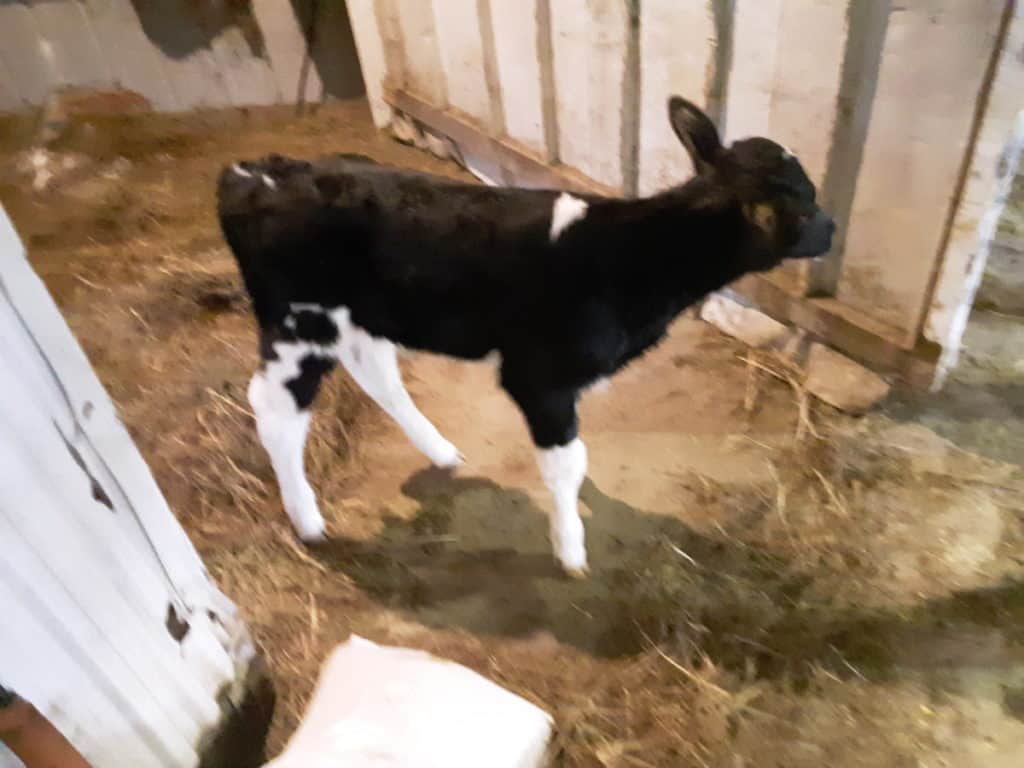
Now you are ready, you have your number and are completely comfortable listening to the animals sell and knowing the bid.
Now, you can consider bidding yourself.
Consider watching the crowd a little and watching other people bed to see what they do to attract place their bids.
To place a bid, raise your hand or bidder card
Everyone has a different way of bidding it seems, by that I mean a different way of getting the auctioneer’s attention.
Some bidders raise their hand or wave a bit, others do more of a flicking motion with the hand, some raise up their buyers number and others nod.
There are a huge variety of ways to place a bid.
I tend to raise my hand for the first bid, then nod yes or no when the auctioneer asks about additional bids. Don’t be afraid to say no!
Keep your hands still if you are not bidding
If you have not thought of it, please don’t be making bidding type motions if you are not actually bidding!
Keep your hands down and don’t wave arms or whatever around to get someone in the crowd like your neighbor or friend to notice you.
You’ll end up with more notice than you had planned on!
This goes double for expressive talkers (people who can’t talk without using tons of hand and arm motions)!
Each bid raise will be incremental
Generally, the higher the total purchasing price the more the bid will rise with each bid.
For example, the bidding on a brood cow will go up by $100 with each bid at the beginning then by $50 then by $25.
The opening bid might be $500, then the next few bids are 600, 700, then it stalls out because no one wants to pay 800.
The auctioneer will split the difference and ask for 750.
If that works the bidding will go up by 50’s, if not the new asking price will be 725 and the bidding will go up by 25’s.
Selling by the pound has smaller bid raises
With an animal that sells by the pound, the idea behind the raises in bids is the same.
At the start, there are big jumps in price that get smaller and smaller until there are no more bids.
For example, if the auctioneer wants $1.20 as the opening bid for a bottle calf, but first bid that comes in is $1.00.
The next bid will be $1.10 or 1.20, then up by five cents or so at a time until reach final bid.
The bid raises are at the auctioneer’s discretion, so pay attention. These examples will give you an idea of what is likely, but it can vary.
Lower priced animals have lower bid raises
For something that will bring a lower total price but still sells by the head, like chickens, the bidding will be in smaller increments.
For example, the opening asking bid on a rooster could be $15 with the first actual bid being $10.
Most auctioneers then would ask for $12.50 then ask $15. If there are no takers at $15, he’ll drop the prices back a bit and ask $13 then $13.50, etc.
Chickens are an easy example to use. These smaller bid raises would also apply to rabbits, other poultry, pigeons, etc.
Know current prices of the animal
All livestock fluctuates in price according to demand. Prices are not exact, they change quite a bit week to week, especially in the smaller stuff.
Here are a few examples of price variability that I have seen over the past few years at the local auctions.
A few years ago laying hens brought $2-3 each. If there were a lot of hens for sale that day the last few to sell brought less, sometimes significantly less.
Now those same hens bring $6-8 each normally and if they look really good sometimes $14-20. Prices for small, homestead type livestock are up.
Roosters are the same way. They were not worth taking to the sale a few years ago. Seriously, no one wanted them.
Now a good looking mature rooster will bring $15-20 each, more for breeding stock or one that is looking super.
I use Ohio Grain And Livestock Market Reports page on the Farm And Dairy site for current prices in the Ohio markets. Your area will have something like this, find it and be familiar with the prices you can expect.
Also, the auction you go to will have a market report, read it and go back through and read last week, last month and poke around in last year. This will give you an idea of prices and seasonality.
I have an article on how to read a market report for cattle, sheep and goats. Check out the one that suits you or look through all of them!
Know how you are trucking your animals home
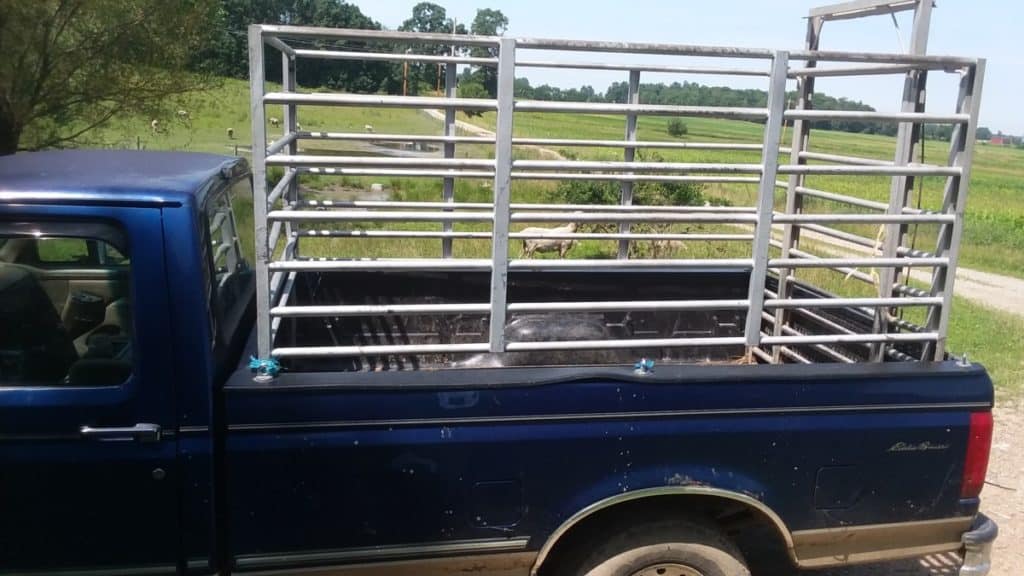
It’s super exciting to see great looking animals at the sale and bid on them! And even better when you are the winning bidder!!
Now that you have your new stock, how are you getting it home?
At any auction I have been to there are a number of haulers that will take your purchased animals wherever you want the animals to go.
You may be taking them home or straight to the butcher, a hauler can work you into the schedule either way.
If you don’t know a hauler to call, ask at the action office, they will know of haulers you can talk with.
Have your receipt ready to show the hauler
Hauling purchased animals out of the auction is a busy time for the hauler, so have your details ready, including the number of the animal that is being hauled.
Each animal will get a sticker glued onto it’s back, that’s the auction number. The individual identification like tag or tattoo number is helpful, as well.
Lots of people without trailers buy animals to pay someone else to haul for them, so be patient.
Your hauler will combine loads so that they make the most sense delivery wise. Think of it like a bus route.
That does not necessarily mean that your animal will be hauled out on his first load. You may have to wait until a few loads later to get your animal.
If you don’t want your animals on a combined load, request that your stock is the only thing on that load.
Keep in mind this will be pricey, but should be doable.
Be ready at home for the stock
Have your pen set up and barn ready for your animals before you go to the auction!
Do not buy something and just leave it up to the hauler to figure out what to do with it when he gets to your house.
If you are hauling for yourself, you’ll still need to be prepared at home first.
Be patient, the line to load can be long
Sometimes it takes a while for the auction staff to get each buyers stock to the right trailer.
The auction staff are doing their best to efficiently load all trailers, but for a busy sale the line to load can be hours.
After a full day at the auction and then loading and finally getting home, you’ll be tired.
Now is not the time to be searching around for that gate you know you have somewhere or that last bale of straw you didn’t use last time.
By now, that last bale of straw is way back in some dark corner you’ll walk by three times before seeing it. Save yourself the stress and be ready.
Get the animals settled in for the night ASAP
Remember the animals have had a long and stressful day, as well.
Having their pen ready means they get off the trailer and start to settle in faster, good for them and good for you.
Put your new stock in a reliable pen, at first
If you plan to turn your new animals out to pasture, don’t.
Put them in a smaller starter pen for the first few days until they get used to your farm (and you) then consider turning them out on a bigger area.
A cautionary tale regarding newly purchased livestock
It may seem like I am nattering on about this secure pen thing a bit too much. Get past it, right? Read on, then you’ll be with me and the secure pen.
This is a local story from a few years ago but still true!
This isn’t a story to scare you off, it is to make sure you are aware and take some caution before things get out of control for you.
Story: A local guy, when we lived outside of Wooster, bought a few stocker cattle to put on pasture he was renting.
The few animals he had put on the pasture first were not able to keep up with the growth of the grass so he needed to get a few more to satisfy the owner of the land.
These new cattle were picked up at an auction and just turned out, right off the trailer.
The steers were keyed up from the trailer ride and their time at the auction.
They were from out of state, so they were not easy to handle (a major understatement).
They immediately broke out of the pasture and ran all over the area, which backed up to a 4 lane highway, for a few days until they were finally caught.
The cattle were immediately sold for slaughter, since they were so hard to keep in.
To be fair, putting these cattle in a starter pen would not have made them less stressed, at least at the beginning.
And maybe they still would have needed to be sold because they were so hard to handle.
This is one of the times when a good deal wasn’t such a bargain!
But at least the cattle would have stayed contained in the secure pen, which is safer and less stressful for them as well.
Next week is another auction-you can wait
I am very aware of the rush to get animals once you decide to start a new project!
I love to look around for and get a new animal, they are your best guess to improve something about your livestock life.
New genetics better suited to your area or management, or maybe a new enterprise altogether-you’re branching out! Exciting stuff!
However, not to dampen the enthusiasm, there will be another auction next week. Don’t rush it.
If the stock you need doesn’t show up this week, stay patient.
Ask around, maybe what you want is available privately or as a scheduled sale in a few weeks.
Healthy, calm, well grown livestock is worth the wait.
